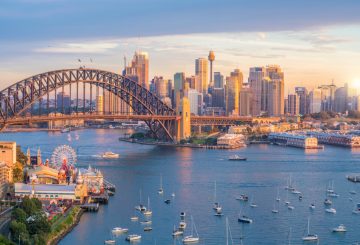定年に達した後も働き続けたいと考えている高齢のオーストラリア人なら、政府が少し楽にできるようにしました。年金に影響が出る前に、仕事で毎年稼ぐことができる金額を4000豪ドル増やしました。この変更は、年金受給者が労働力に留まることを奨励するために行われました。
しかし、ニュージーランドでは高齢労働者に対する規則が大きく異なります。オーストラリアがニュージーランドのアプローチを採用すれば、さらに50万人の意欲的な労働者が加わり、その多くが税金を払うことになる。
オーストラリアでは、65歳以上の人々のうち、有給労働に就いているのはわずか 15.1% です。これに対し、ニュージーランドでは 26% です。ニュージーランドは、この数字をアイスランドと同じ 33.1% に増やすことも目指しています。
では、ニュージーランドは何が違うのでしょうか?オーストラリアとは異なり、ニュージーランドは働く年金受給者に罰則を科しません。オーストラリアでは、仕事で週227ドル以上を稼いでいる年金受給者は、年金の減額により余計に稼いだ金額の半分を失います。つまり、税率が 19% の限度額を超えると収入の合計の 69% を失い、32.5% で課税される所得の部分では 82.5% を失うことになります。
ニュージーランドでは、年金受給者にはそのような罰則はありません。彼らは所得税を払うだけです。退職年金と呼ばれる年金は、収入や資産に関係なく、年金受給年齢に達したすべての人に支払われます。
オーストラリアがこのアプローチを採用すれば、教育や医療などの分野で多くの求人を埋めることができます。しかし、年金受給年齢に達したオーストラリア人の数が増えるため、政府にかかる費用も増えることになります。しかし、オーストラリアが高齢者や年金受給者に対する特別税制優遇措置を廃止すれば、その費用は相殺できるだろう。
実際、計算では、所得税の追加収入が追加の年金の費用を上回ったため、ある時点を超えると、連邦政府の財源が実際に増加することが示唆されています。これは、年配のオーストラリア人が多く雇用されたためだけでなく、より高齢のオーストラリア人が合法的に雇用されたことからも起こるだろう。
現在、年金の影響を避けるために銀行ではなく貯金されている現金で働き、給与を受け取っている高齢のオーストラリア人が何人いるかを知ることは困難です。しかし、ニュージーランドでは、退職者が自宅に留まったり、手持ちの現金を受け取ったりするよりも、合法的に働くのが簡単になっていることは明らかです。




























































